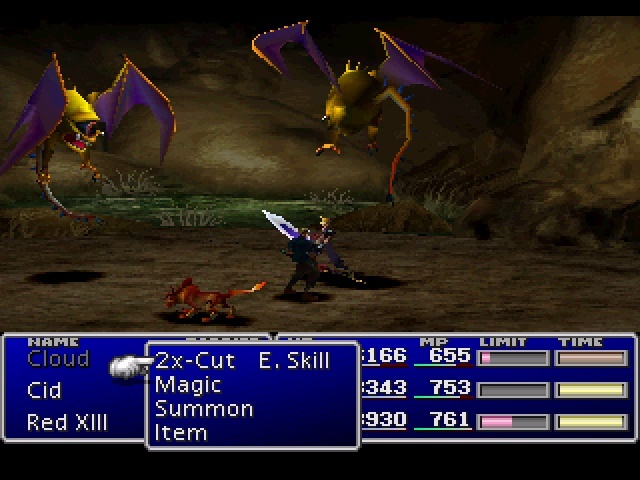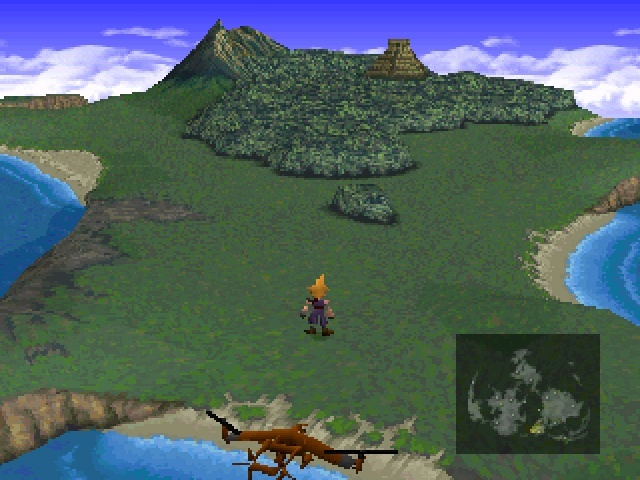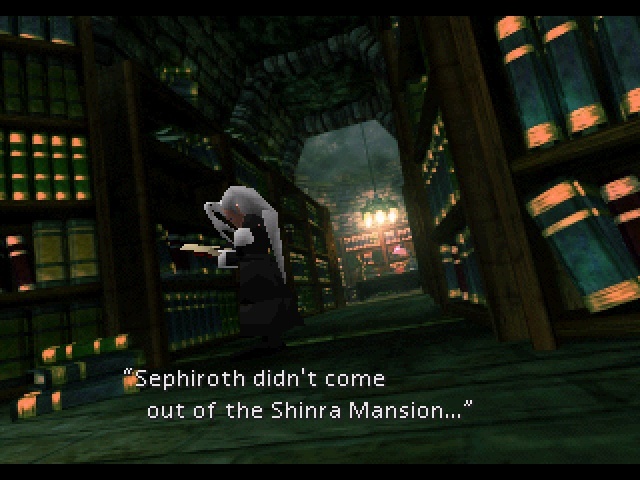Final Fantasy VII (PlayStation) Second Opinion Review
By Albert Lichi  31.01.2017
31.01.2017

Unlike the self-proclaimed game-changer, Final Fantasy XIII, Final Fantasy VII was the real deal. This game was the result of Square being creatively stymied from working with Nintendo's family-friendly policies and technological limitations for over a decade. Finally, the team was set loose to make whatever it wanted on Sony's new gaming platform at the time, the PlayStation. Final Fantasy VII is now 20 years old, and many involved with its creation have moved on to great things in the game industry. Once again, Cubed3 takes a look back at the most important JRPG ever released.
Replaying Final Fantasy VII is an interesting experience after all these years, since Square Enix has expanded the media surrounding it. From CGI feature length movies, rides, comics and even spin-offs, there is a great disconnect with the original game that comes across like those who made the expanded media never even played the PlayStation title.
Final Fantasy VII is the progenitor of a vast franchise that is largely incongruent with what it is known for. The characterisation, tone and even style is not properly represented in any of the movies or subsequent spin-offs that have kept the brand alive all these years. It was made by a bunch of geeks who were inspired by the likes of Indiana Jones, Blade Runner and Star Wars; whereas everything that came after it was inspired by Gakt and fashion. The fact of the matter is the landscape of game development has changed drastically—some may say for the worse... but back in 1997, there were many elements in the right place to conceive Final Fantasy VII.

Before this game, JRPGs were very formulaic. While Square at the time did manage to shake things up with Final Fantasy VI by doing some bold narrative tricks, like having a villain succeed, or a huge cast with no clear protagonist, or experimenting with new styles of fantasy that incorporated steampunk visuals. With their seventh game, Square went full-on cyber dystopia and had aspects of urban nightmare, body-horror and science fiction. In 1997, there was nothing like Final Fantasy VII. Before it, JRPGs were usually anime-inspired Tolkien stories of dragons, saving princesses and plucky protagonists.
Final Fantasy VII's protagonist was Cloud Strife, a stark contrast to what most JRPG heroes were at the time. Cloud was a selfish jerk with little concern for others and was prone to quite a bit of silliness, while the expanded media misrepresents him as a cold, brooding, melodramatic and even boring. Original Cloud does have some of these qualities, but they really were much more understated and mostly relegated towards the beginning of the story. When Final Fantasy VII first came out, it was largely a deconstruction of the tropes JRPGs were known for. It's a bold and daring game that even went so far as to permanently kill off an important character, which resulted in one of the most gut-wrenching and tragic scenes in the entire genre. It is no surprise that this game has been kept around for so long and has an impending remake on the horizon.
The way Final Fantasy VII begins is pure genius and flawlessly sets the tone using the best visual language to express itself. The game wastes no time with text and immediately has Cloud thrown into a situation anyone can understand: a rag tag group of rebels versus evil empire. Just by the visuals, all this information is flawlessly expressed and compounded by the riveting score by Nobuo Uematsu. Much of the story is driven this way, keeping things interesting, and while there are a few dull moments where everything comes to a halt (looking at you, Cosmo Canyon), Final Fantasy VII's story and pacing holds up.

There are many standout moments, such as the city of Junon coming under fire of a large Godzilla-like monstrosity, and a thrilling chase that climaxes with a slap fight on the top of a giant cannon. Needless to say, Final Fantasy VII was never afraid of getting silly. This was a serious story that had silly things happen—not that much different than a Metal Gear Solid game—yet was always grounded in a gritty setting. Unlike the expanded media, the original game kept the characters relatable. These were no super humans with god-like abilities as seen in the CGI movie; no, these were more human and relatable characters. This is why there are so many parts in Final Fantasy VII that have some real tension in it. There is a tangible threat in the atmosphere to keep things interesting, and thanks to the music, it can even feel downright haunting.
Final Fantasy VII may be a very important JRPG, but it isn't without its flaws. It is easy to pick apart the low polygon count of the character models, since these were some of the first 3D graphics ever made by Square, but nobody would challenge the art direction. Tetsuya Nomura would forever live in the shadow of this game. Even today he still tries to recapture the magic of the feel of Final Fantasy VII. Much of the prerendered 2D backgrounds look phenomenal still. The gritty world felt lived in and dirty—possibly like our world, but one that survived some kind of catastrophe. It's a setting that has things that are both familiar and alien—a world worth exploring... when the camera isn't zoomed out so far that Cloud looks like a fly on the TV screen.
When the game has screens where the camera is so far away, it feels like it can take ages to move Cloud anywhere. This is a problem throughout the entire game, and is compounded with other flaws, like some of the aforementioned complete stops in the story. This isn't limited to just walking around; even the combat has some really long and unskippable animations that pad out the adventure's run time. These were the flaws of Final Fantasy that still haunt the franchise to this day. It seems like every game never had the option to completely skip these animations without having to go into an options menu to toggle them all to a shorter version.

Hironobu Sakaguchi and his team made one of the most important JRPGs ever. Final Fantasy VII became a game that was often imitated, and it reshaped the way JRPGs were made. Even today, Square Enix is still inspired by Final Fantasy VII, and it is evident in pretty much everything the company has ever made since Hironobu Sakaguchi left to form Mist Walker. It can be seen in nearly every Kingdom Hearts game, and even in later numbered Final Fantasies, such as the entire Final Fantasy XIII trilogy that was extremely desperate to recapture the magic from 1997, but to no avail.
Final Fantasy VII has become a pop cultural phenomena, like the original Star Wars film from 1977. So many visuals and musical cues are seared into the minds of millions of people. Cloud's iconic Buster Sword and spiky hair, Sephiroth's black clothes and silver hair, rusty industrial urban environments, casino-style mini-games, trains, and meteors are things most gamers will automatically recognise when they are referenced in other games. While Final Fantasy VII was meant to deconstruct the tropes of JRPGs at the time, it inadvertently created new tropes of the day, since the game was so often imitated.
From then on, there were many JRPGs that abandoned the high fantasy setting in favour of the hybrid style that Final Fantasy VII established. Heroes became more emotional and, generally, things got grittier. No longer JRPG fans would accept a simple story of an adventurer on a quest to save the world. Final Fantasy VII set the bar high in 1997 and to this day Square Enix is trying to once again reach it with the inevitable remake.

Cubed3 Rating
Exceptional - Gold Award

Final Fantasy XIII was meant to surpass Final Fantasy VII, according to the producers. Nobody was satisfied with how the former turned out, apparently, since now Square Enix is set on remaking its most memorable title. Final Fantasy VII has aged, but with the proper understanding of historical context, anyone should be able to appreciate it. The story, characters and setting are among some of the finest ever created in the entire medium of video games. Something special was in the air at Square's studios in the 90s. They made some of the greatest games of their catalogue in that time, and with Final Fantasy VII setting the stage, they changed a genre forever.

![]() 8/10
8/10
![]() 9/10
(2 Votes)
9/10
(2 Votes)
 Out now
Out now  Out now
Out now  Out now
Out now  Out now
Out now Comments
Comments are currently disabled

 Sign In
Sign In Game Details
Game Details Subscribe to this topic
Subscribe to this topic Features
Features





 Top
Top

